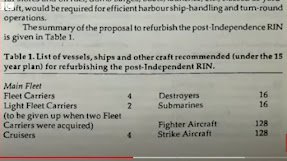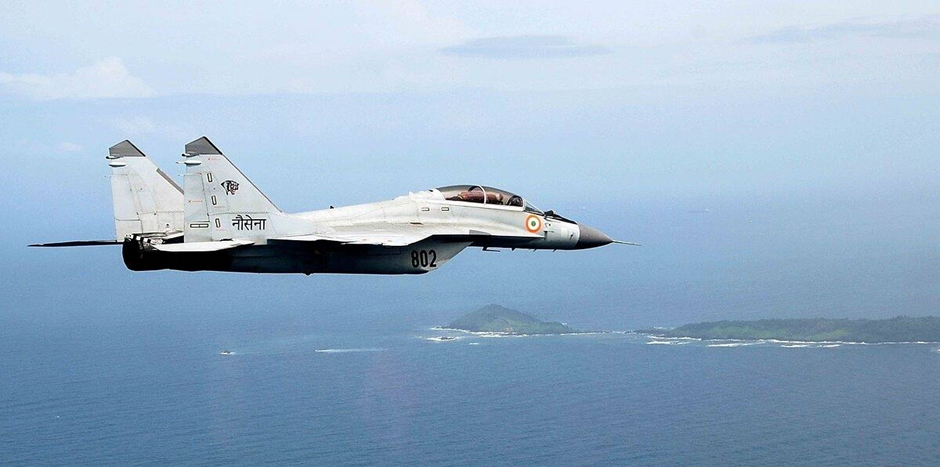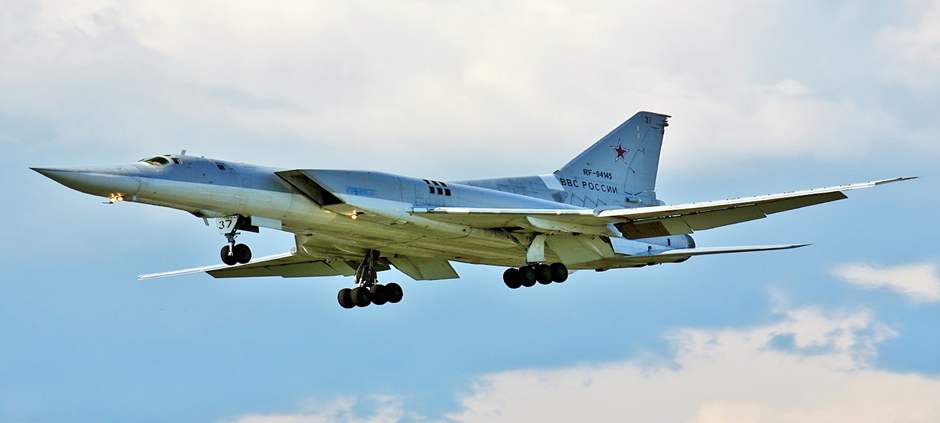India Needs 4 Aircraft Carriers, 150 TEDBF & 26 Rafale-M (Updated)
The original plan of the Indian Navy was always to operate 4 aircraft carriers. The requirement formulated was always to go for 4 fleet carriers and 2 light carriers (to be given up when 2 fleet carriers were acquired). This requirement was formulated after independence in 1947 after India ceased to be the Royal Indian Navy (RIN). Even the names of 4 aircraft carriers were decided by the Indian Navy (IN). Also, the requirement for ship-based and shore-based strike aircraft was stated at 128. The following are the names of 4 aircraft carriers that the Indian Navy wanted to own under 15-year modernization plan, these are:-
1. Vindhya
2. Satpura
3. Gauri Shankar
4. Vikrant
A few months back the new INS Vikrant was commissioned into the Indian Navy. As with the prevalent practice, the Indian Navy named its new aircraft carrier INS Vikrant, thus bringing back what was lost when the original INS Vikrant was decommissioned in 1997. Now everyone is talking about whether the Indian Navy should go for a bigger and more costly 3rd aircraft carrier or look to set up a low-cost island-based fixed aircraft carrier like the idea floated by late CDS Gen Bipin Rawat. My assertion is that we not only need at least 2 low-cost island-based fixed aircraft carriers but, also, need 4 floating aircraft carriers.
a. India
needs 4 aircraft carriers conventionally powered (for now), out of which 2 need
to be of INS Vikrant class and the other 2 of INS Vikramaditya class. While the INS
Vikrant class carries 12-14 fixed-wing jets and 10-12 helos each (for SAR, ASW, AEW), the INS Vikramaditya class carries 16-18 fixed-wing jets and 12-14 helos each (for SAR, ASW, AEW). Please note I am not going by Wikipedia
figures but on the calculation of 1000 tons per aircraft/helo and 10000-to-12000-ton
supplies that each carrier loads up with on each trip, excluding the fuel and
ammunition supplies.
1st
carrier takes care of the western seaboard, 2nd carrier takes care of the eastern
seaboard, 3rd carrier in repairs and 4th carrier takes care of the remaining part
of the Northern Indian Ocean left untouched by the 2 carriers and the entire
Southern Indian Ocean. The southern Indian Ocean is a massive fish, oil, gas, and
mineral-rich area. Do note China has already forayed into this area and is practically
robbing the fish in the area with huge fishing trawlers.
b. Note that
12 fixed-wing jets each on 2 INS Vikrant class carriers and 16 fixed-wing jets on
2 INS Vikramaditya class carriers add to 56, almost the exact number of 57 the
Navy wanted originally while selecting a replacement for 44 Mig 29K/KUB.
Another point to be noted is that we have design schematics of both INS Vikrant
class carriers and INS Vikramaditya class carriers (if we didn’t have access to the design schematics of Vikramaditya, we surely couldn’t have suggested changes
for a complete redesign of the carrier as per our need).
So, it will
be much easier to build another 40000-ton INS Vikrant class carrier (renamed
INS Viraat after the 2nd decommissioned carrier) and 2nd 45000-ton INS Vikramaditya
class carrier. It will help amortize the project investment made in training
personnel, setting up machines, and more.
c. Building a
3rd aircraft carrier of just 65000-ton won’t make sense if it’s not fully
capable, meaning it must have a single fuel lifetime nuclear reactor, should be
able to carry and launch 3 E2D Hawkeye-type aircraft, as well as launch at least 40 fully armed and fueled fixed-wing fighters, with 12 to 15 helos. All this can’t
be accommodated in a 65000-ton carrier, it must be at least a 75000-ton carrier same
as what France is building to replace the Charles de Gaulle carrier.
India still can’t
build a single-fuel lifetime nuclear reactor; the nuclear reactors being
designed for future 6 SSNs & 3 S5-class SSBNs are still in concept and no
sign yet that these will be single-fuel lifetime nuclear reactors. Even if built,
that reactor will have to be re-modeled for the carrier. All this will be at least 15 years give or take and is highly cost prohibitive, in the meantime CSL
can easily build another 40000-ton INS Vikrant class carrier and 2nd 45000-ton
INS Vikramaditya class carrier.
d. Many may
say we need a 3rd nuclear-powered aircraft carrier that can help launch fully
armed and fueled fixed-wing fighter jets. However, even with conventionally
powered aircraft carriers, it is possible. Fighters’ jets can launch with full
weapons load and 50% fuel load. Midair can be refueled by buddy-buddy
refueling or with an unmanned refueler UAV. This way even conventionally powered aircraft
carriers can operate and launch fully armed and fueled fixed-wing fighters.
e. A low-cost
island-based full-fledged fixed aircraft carrier like the idea floated by late
CDS Gen Bipin Rawat, is a good idea. 1st in Andaman Islands and 2nd in Lakshadweep
Islands. Many may say we already have them, but please note those are IAF bases
operating Su30MKIs or Mig 29s both of which are owned by IAF and operated by
IAF pilots except for the 12 Jaguar IMs that are owned by IAF operated by IAF
pilots but are under command of Indian Navy. What is needed is a full-fledged
fixed aircraft carrier or naval air base that operates not just Mig 29K,
TEDBF, but also E2D Hawkeye, and P8Is.
It must also
be protected from natural calamities like cyclones or tsunamis. Also, the island-based full-fledged fixed aircraft carriers can be used to launch 24 fully armed
Tu22M3s (12 on each base). Do note, that just as Russia is restarting the Tu160
production line, there is a good chance it may restart the Tu22M3 production line as
well, if that happens then India must buy 24 of them. Leasing them is not an
option, as leased platforms can’t be used in war. Tu22M3 with its 7000 km
range armed with cruise missiles can launch serious land attacks both on the eastern
and western sides.
f. Indian
Navy must take delivery of 150 TEDBFs at least because otherwise will be
impossible to amortize the project. Do note that TEDBF is not LCA MK2 with an extra
engine, it’s a completely new design. As such a new production line, new HR
training, new machinery, new validation process of the system, and new
certification process have to be followed to take TEDBF which is still in the concept stage to LSP/SP levels. Yet how TEDBF will be amortized for all the
investment made in the project is difficult to figure out. While 56-60 TEDBF are
expected to fly from 2 Vikrant class and 2 Vikramaditya class carriers, if
these 4 carriers are ultimately chosen, 25 will stay at INS Hansa for training,
while 25 each will fly off from the 2 fixed base aircraft carriers as mentioned
earlier.
g. If 26
Rafale M or FA18 are to be chosen, they will be chosen for INS Vikrant, out of
which 10-12 will remain in INS Hansa (it has SBTF) for training while the other 12-14
will fly from INS Vikrant, while the INS Vikramaditya will be reserved for
Mig29K/KUB till TEDBF arrives to replace the fighter jet complement of the 2
carriers. It is now being revealed that the lift size of INS Vikrant or
INS Vikramaditya, can’t accommodate Rafale M as they don’t fold wings; whereas
FA18 can not only be accommodated in the lift of 2 aircraft carriers but also can easily communicate with P8Is and MH60R. So, in all likelihood FA18 might be
chosen, but what will happen to the 26 FA18 when TEDBFs arrive by 2035 or 2038?
These 26 FA
18 will become surplus and a headache for the Indian Navy. On the other hand, if
Rafale M is chosen, even when TEDBF arrives there won’t be a surplus, these can
easily be used by IAF, as reportedly Rafale AF or Rafale C and Rafale M are 85% the same minus tailhooks, and some essential items needed for naval aircraft. Do note that the RFQ for 114 MRFA is still not released and
if IAF was really interested, it would have done that by now. IAF is probably
thinking that going the G2G way for 114 Rafale will be the best option. If that is
done, then maybe Dassault may well help develop a mechanism to enable Rafale M
to fit into the lift of INS Vikrant. Let’s see if better sense prevails and India
goes for 4 Aircraft Carriers, 150 TEDBF & 26 Rafale-M.











it all depends on how well India can allocate budget as well as have a pragmatic approach towards defense
ReplyDelete